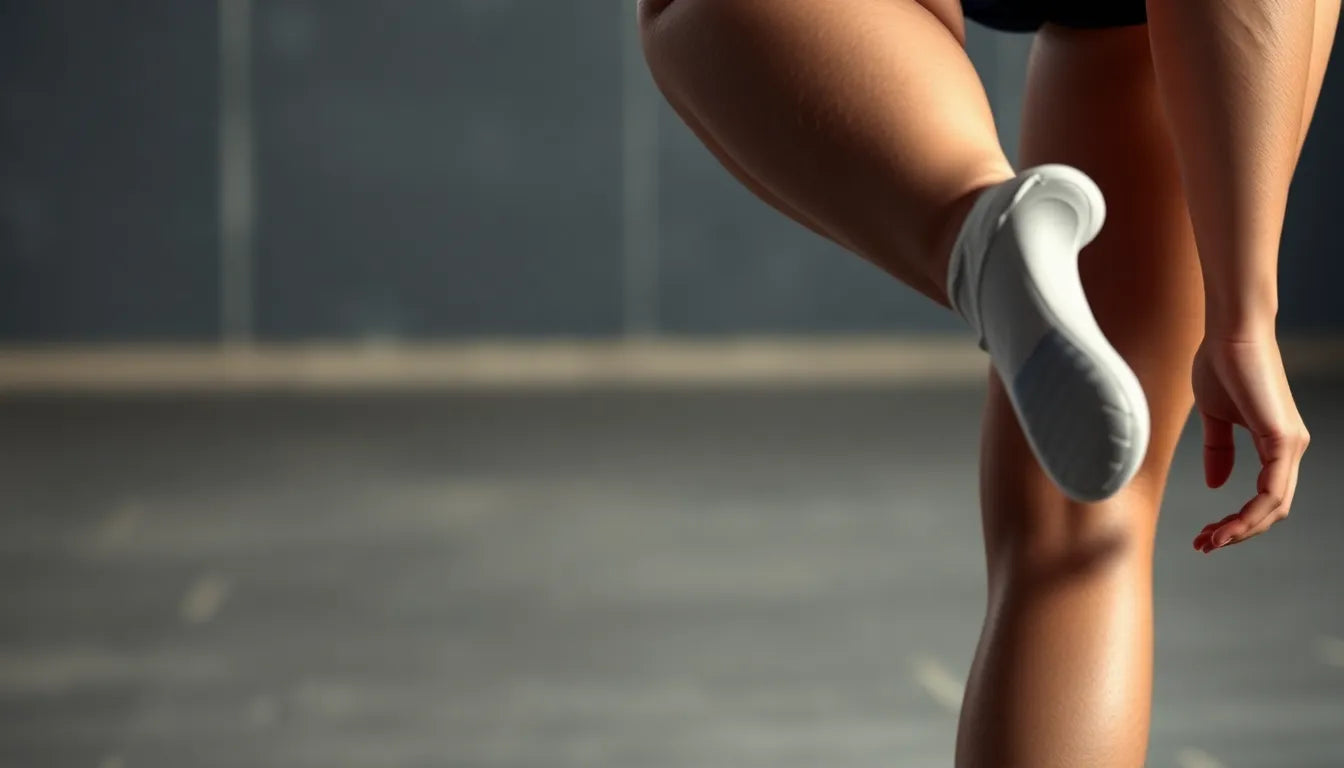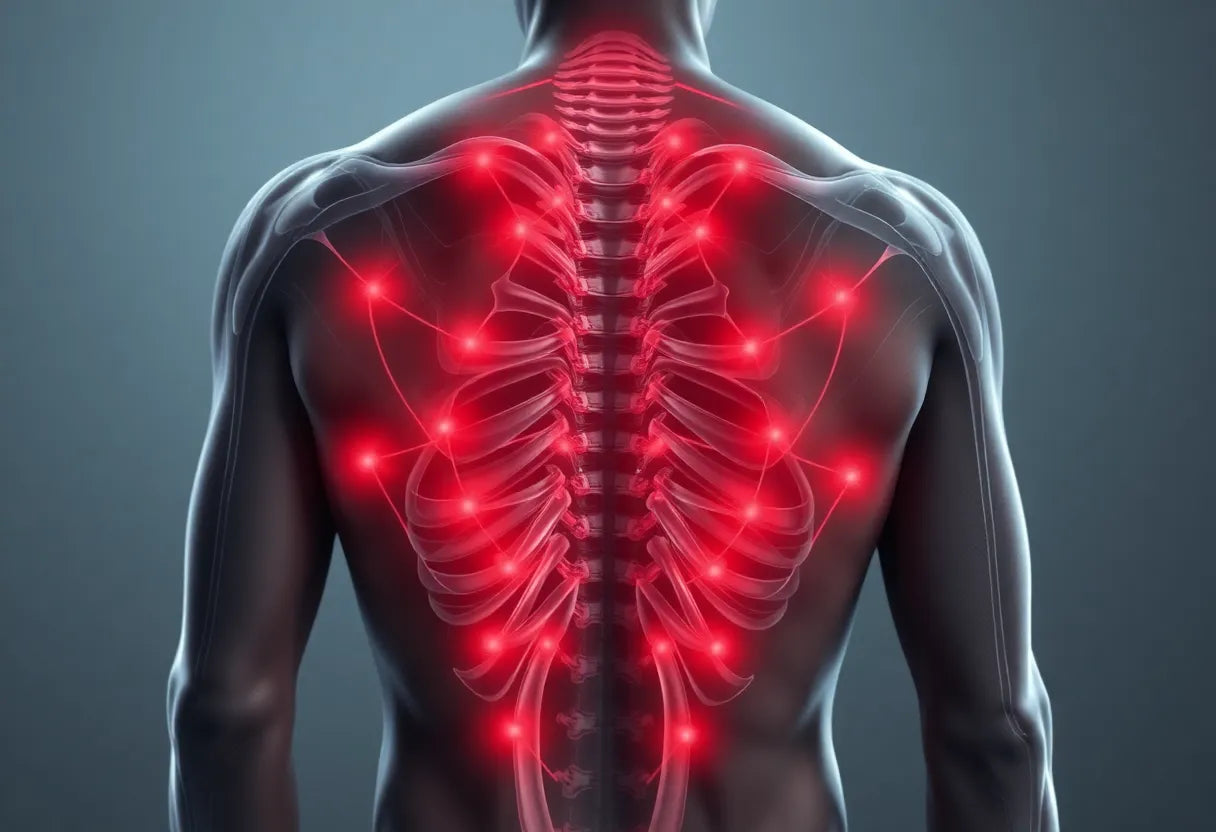Upper back tension is an all-too-common complaint among individuals, especially those leading sedentary lifestyles or spending long hours at a desk. Characterized by a feeling of tightness or discomfort in the upper back region, this condition can significantly impact daily life. It often leads to discomfort, limited mobility, and in some cases, chronic pain if left unaddressed. Many people find themselves struggling with routine tasks or experiencing a decline in their overall quality of life due to persistent upper back tension.
Understanding upper back tension
Upper back tension occurs when the muscles in the upper back become tight and strained. This tension can be attributed to prolonged periods of sitting, poor posture, and stress. Those who work at desks or use computers for extended periods are particularly susceptible. The repetitive nature of these activities often leads to muscle fatigue and stiffness, contributing to the development of tension in the upper back.
The impact of upper back tension extends beyond mere physical discomfort. It can hinder productivity, affect mood, and even interfere with sleep. The constant ache and stiffness can make it difficult to concentrate on tasks, resulting in decreased work efficiency. Additionally, the discomfort can lead to irritability and stress, further exacerbating the issue. Addressing upper back tension is crucial not only for physical health but also for mental well-being.
The importance of addressing upper back tension
Resolving upper back tension offers numerous benefits, including improved posture, enhanced mobility, and overall well-being. By alleviating muscle tightness, individuals can experience greater freedom of movement and a reduction in pain. Improved posture not only enhances physical appearance but also supports better spinal alignment, reducing the risk of future discomfort.
Taking a holistic approach to managing upper back tension is essential for long-term relief. This involves a combination of physical exercises, posture correction, and lifestyle adjustments. Incorporating specific stretches and mobility exercises into daily routines can effectively target and relieve tension in the upper back. Additionally, making ergonomic adjustments to workspaces and being mindful of posture throughout the day can prevent the recurrence of tension.
This blog post will explore practical and effective techniques to relieve upper back tension. From yoga-inspired stretches to self-massage techniques and strengthening exercises, we will provide you with a comprehensive guide to address this common issue. By implementing these strategies, you can say goodbye to upper back tension and enjoy a healthier, more comfortable life.
effective stretches and mobility exercises
To combat upper back tension, incorporating specific stretches and mobility exercises into your routine can be highly beneficial. These exercises not only relieve tension but also enhance flexibility and improve overall posture. Here’s a closer look at some effective techniques:
- Yoga-inspired stretches: Incorporating yoga stretches like the Cat-Cow stretch, Child's Pose, Thoracic Extension, Pec Stretch, and Thoracic Rotation can significantly ease muscle tension. These stretches focus on gently mobilizing the spine and opening up the chest, which helps counteract the effects of prolonged sitting.
- Dynamic movements: Engage in dynamic exercises such as arm reaches, chair twists, and spine rotations. These movements help increase blood flow and improve the range of motion in the upper back, reducing stiffness and discomfort.
- Static stretches: Incorporate static stretches like shoulder rolls and upper trapezius stretches. Holding these positions allows your muscles to relax and lengthen, providing relief from tension.
Regularly practicing these stretches can lead to noticeable improvements in upper back mobility and a reduction in tension-related discomfort.

Women's Posture Shirt™ - Black
Forbedrer kropsholdningen, aktiverer muskler og kan afhjælpe øvre rygspændinger.
self-massage techniques and tools
Self-massage is another effective method for alleviating upper back tension. Using tools like massage balls and foam rollers can target knots and improve circulation in the affected areas. Here’s how you can incorporate these tools into your routine:
- Massage balls: Place a massage ball between your upper back and a wall, then gently roll it over tense areas. This technique helps release trigger points and knots, providing relief from tightness.
- Foam rollers: Lie on a foam roller positioned horizontally under your upper back. Slowly roll back and forth, focusing on areas where you feel tension. Foam rolling helps to improve blood flow and reduce muscle stiffness.
For those who prefer visual guidance, there are numerous video resources available online that demonstrate effective self-massage techniques, making it easier to follow along and ensure proper execution.
strengthening exercises for long-term relief
While stretches and massage provide immediate relief, strengthening exercises are crucial for long-term prevention of upper back tension. Building strength in the upper back and core muscles can help maintain proper posture and reduce the likelihood of tension recurring. Consider incorporating these exercises into your fitness routine:
- Rhomboid retractions: This exercise targets the muscles between your shoulder blades. Sit or stand with your arms at your sides, then squeeze your shoulder blades together, holding the position for a few seconds before releasing.
- Thoracic extensions: Sit on a chair with your hands behind your head. Gently arch your upper back over the back of the chair, then return to the starting position. This exercise helps improve mobility and strength in the thoracic spine.
Integrating these strengthening exercises into your routine can significantly reduce the risk of developing upper back tension in the future, allowing you to enjoy a healthier, more active lifestyle.
Posture and ergonomic adjustments
One of the most effective ways to prevent and alleviate upper back tension is by maintaining good posture. Poor posture, especially when sitting at a desk for extended periods, can lead to muscle strain and discomfort. Here are some tips for correcting your posture and improving ergonomics in your workspace:
- Desk setup: Ensure your computer screen is at eye level to prevent hunching. Use a chair that supports the natural curve of your spine and adjust it so your feet are flat on the floor.
- Sitting posture: Keep your back straight and shoulders relaxed. Avoid crossing your legs and try to maintain a 90-degree angle at your hips and knees.
- Frequent breaks: Stand up, stretch, and walk around every 30 minutes to reduce muscle stiffness and promote circulation.
Implementing these ergonomic adjustments can significantly reduce the strain on your upper back, helping to prevent tension before it starts.

Men's Posture Shirt™ - Black
Aktiverer muskler, forbedrer kropsholdningen og afhjælper øvre rygsmerter og spændinger.
Lifestyle and stress management
Beyond physical adjustments, managing stress and leading a balanced lifestyle are crucial in addressing upper back tension. Stress can cause muscle tightness, and poor sleep or inactivity can exacerbate the problem. Here are some strategies to consider:
- Relaxation techniques: Incorporate breathwork and meditation into your daily routine to help manage stress levels. These practices can relax both your mind and muscles.
- Regular exercise: Engage in activities that promote movement, such as walking, swimming, or yoga, to keep your muscles active and flexible.
- Sleep hygiene: Ensure you get adequate sleep each night. A supportive mattress and pillow can also help maintain proper spinal alignment during rest.
By addressing lifestyle factors and stress, you can complement physical exercises and posture adjustments to achieve comprehensive relief from upper back tension.
Frequently Asked Questions
What are the most common causes of upper back tension?
Upper back tension is often caused by poor posture, prolonged sitting, stress, and a lack of exercise. These factors can lead to muscle strain and discomfort.
How often should I perform these exercises and stretches?
For optimal results, aim to perform stretches and exercises daily. Even short, regular sessions can help maintain flexibility and reduce tension.
When should I seek professional help for upper back tension?
If you experience persistent or severe pain that doesn't improve with self-care, it is advisable to consult a healthcare professional for a thorough evaluation and personalized treatment plan.
Can lifestyle changes alone alleviate upper back tension?
While lifestyle changes can significantly reduce tension, combining them with regular physical exercises offers the most comprehensive relief and prevention.
What are some quick desk exercises to relieve tension during work?
Simple exercises like shoulder shrugs, neck stretches, and seated twists can be performed at your desk to relieve tension and improve posture. Taking regular breaks to move around is also beneficial.
Källor
- Synergy Rehab. (n.d.). "Upper Back Pain Relief."
- Smith, J. (2017). "Understanding Back Pain: A Review." Journal of Pain Research.
- North Arizona Orthopaedics. (n.d.). "Understanding Low, Mid, and Upper Back Pain: Symptoms and Treatment."
- Ochsner Health. (n.d.). "Upper Back Pain: Causes and Treatments."
- Johnson, A. (2017). "Musculoskeletal Disorders and Workplace Ergonomics." Occupational Medicine Journal.
- Mayo Clinic Staff. (n.d.). "Back Pain: Lifestyle and Home Remedies."
- California Pain. (n.d.). "Upper Back Pain Relief."
- UC Davis Health. (2022). "8 Tips to Help Ease Your Back Pain."


















